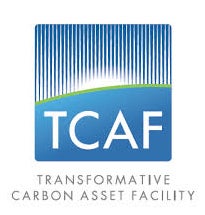Overview
TCAF complements other types of World Bank Group financing (including investment and development policy lending), as well as financing from other development partners and domestic financing.
The facility is closely aligned with World Bank Country Partnership Framework objectives, which aim to make development country-driven, systematic, evidence-based, selective, and focused on the Bank's twin goals of ending extreme poverty and increasing shared prosperity in a sustainable manner.
The facility’s management team works with development partners both within and outside the World Bank Group to identify promising emissions reductions concepts and programs and to implement countries’ own priorities, e.g., their NDCs.
Key Areas of Work
Helping countries achieve NDC targets
- Working with national policy makers, TCAF helps shape domestic environmental, energy, and climate change policy to reach meaningful scale and create a lasting, transformative social impact.
- TCAF helps developing countries implement carbon pricing and sector-wide mitigation measures.
Engaging the private sector
- TCAF leverages public finance to create favorable conditions for private sector investment in low-carbon technologies, provide blueprints for efficient and low-cost mitigation, and achieve lasting transformational impact.
Informing international climate finance policies
- TCAF’s efforts will inform international climate negotiations, providing lessons learned from its engagements with developing countries.
How TCAF Achieves Results
TCAF offers tailored results-based climate finance and policy support to encourage countries to raise their climate ambitions.
- TCAF develops innovative carbon accounting methodologies that enable countries to attribute emission reductions to the implementation of green policies as well as economy/sector-wide programs, beyond project-by-project mitigation activities.
- TCAF supports mechanisms that account for carbon credits from various carbon pricing schemes, allowing for flexibility in market-based climate mitigation approaches and for countries to implement more ambitious carbon pricing instruments.
- Through TCAF programs, countries can generate carbon assets that have strong environmental integrity and a high likelihood of being compliant in a future international carbon pricing system, using conservative baselines and stringent monitoring and accounting practices.
- TCAF purchases a portion of carbon assets (mitigation outcomes) from programs through a results-based model, leaving the remaining available for the host country’s use in achieving their NDC targets. Contributors to TCAF may use these assets for their own compliance, to contribute towards their climate finance objectives (i.e. through cancellation), or the host country can to use them towards their NDC targets.
TCAF Support Tiers

Methodology
The World Bank’s International Bank for Reconstruction and Development (IBRD) offers three types of lending instruments:
- Investment Project Financing (IPF) provides financing to specific investment projects.
- Program for Results (PfR) models finance the expenditures of specific development programs or disburse payments on the basis of the achievement of key results (including prior results) under such programs.
- Development Policy Financing (DPF) provides rapidly disbursing financing to countries to reward achievements of policy and institutional actions including low carbon or green growth policies and fuel subsidy removal.
All three instruments follow a project cycle of identification, preparation, appraisal, and supervision.
Program Development Stages

Types of TCAF Programs
TCAF supports three types of programs:
| Policy-Based Programs | Energy sector reforms, fiscal policy changes, pricing and regulatory measures to promote sustainable mobility |
| Sector-Based Programs | Minimum Energy Performance Standard for industrial sector; sectoral target for share of renewable energy in grid mix or alternative fuels |
| Jurisdictional Programs | Sustainable city (urban) program targeting low-carbon city planning; multi-sectoral approach to reduce carbon footprint of building, transport, water, energy |
Program Design Documents
TCAF offers support both on international and domestic levels.
Domestically: Supporting mitigation ambitions in developing countries
Mobilizing international climate finance, TCAF supports middle-income countries in scaling up their climate commitments and accelerating meaningful socio-economic growth. Working with national policy makers, TCAF helps shape domestic environmental, energy, and climate change policy to reach meaningful scale and create a lasting, transformative social impact. For example:
- Helping developing countries implement market-based carbon pricing and sector-wide mitigation measures
- Leveraging public finance to create favorable conditions for private sector investment in low-carbon technologies, provide blueprints for efficient and low-cost mitigation, and achieve lasting transformational impact
Internationally: Helping shape carbon markets
TCAF’s efforts inform the international process established in Paris to develop standards and agreements for future carbon crediting instruments and transfer of mitigation assets. TCAF tests various methods to transparently transfer “mitigation outcomes” between parties and to provide stringent accounting and transparency, ensuring the environmental integrity of the assets.
TCAF achieves results by tailoring financial and policy support to encourage countries to raise their climate ambitions.


